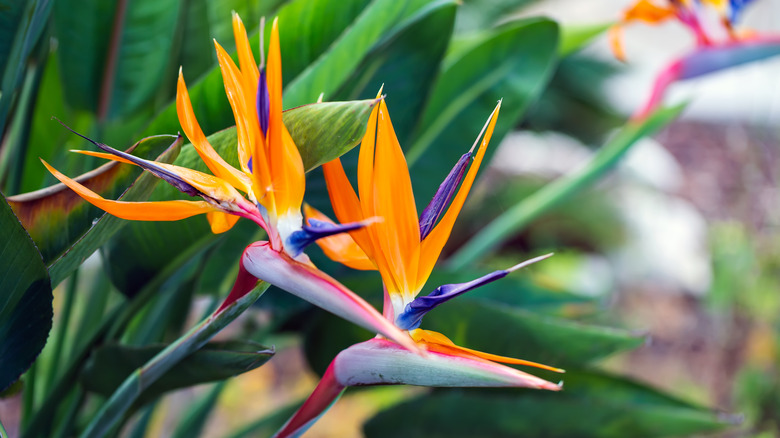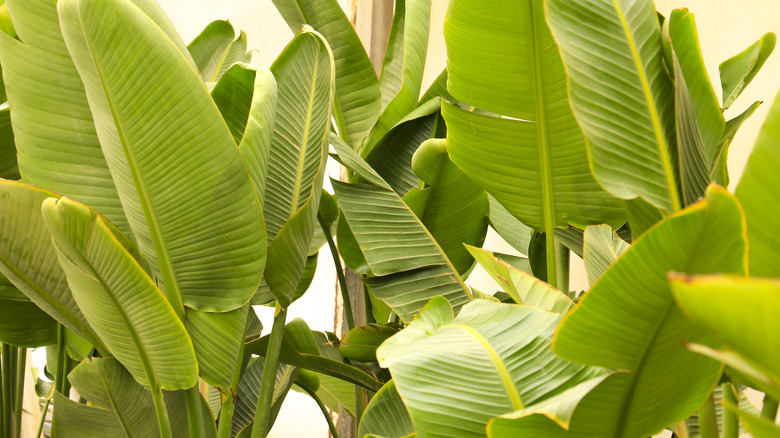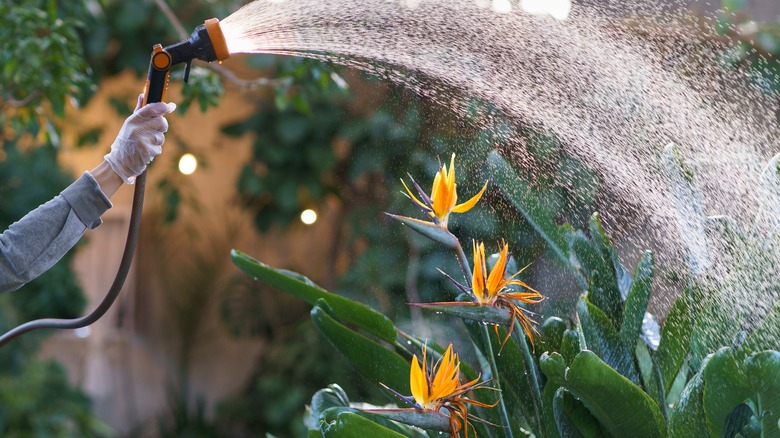Why Splitting Leaves Might Not Mean Your Bird Of Paradise Houseplant Is In Trouble
Bird of paradise (Strelitzia spp.) is a flowering perennial that has gained popularity as a striking houseplant. When caring for your bird of paradise you might notice splitting leaves, but luckily this is not a cause for concern. In fact, it is an evolutionary adaptation to help the plant withstand windy conditions. While these characteristic splits are completely natural, providing optimal growing conditions and care will ensure your bird of paradise develops strong and healthy foliage.
This subtropical species is known for its vibrant orange and purple flowers that resemble a bird's head. Strelitzia species can be grown outdoors all year round in USDA zones 10-12 or as houseplants in climates with colder winters — a bright conservatory is a great spot for your bird of paradise houseplant. Place in a location that receives six hours of sunlight a day and plant in rich, well-draining soil. To encourage flowering, fertilize every two weeks during the spring and summer and keep slightly rootbound.
Why do bird of paradise leaves split?
Bird of paradise plants can grow up to 5 feet tall and bear large, oblong leaves that can reach 18 inches long. These leaves are vulnerable to breaking in the wind or acting as sails that could destabilize the plant. The splits in bird of paradise leaves are believed to be an evolutionary trick that reduces wind resistance. These purposeful tears allow gusts of wind to pass through the leaves, reducing drag that could cause the long stems to snap. In areas where strong winds are common, this adaptation prevents the leaves from being torn off completely or the plant from being uprooted.
The leaf splits occur perpendicular to the central leaf stem (petiole). Splits can form on established, older leaves, or on new leaves as they uncurl. Natural splits or holes in foliage are not unique to the bird of paradise — plants with similar adaptations include the popular monstera (swiss cheese plant), which has leaf fenestrations in the form of holes and incisions. For monsteras, the adaptation serves to reduce wind damage and may also increase the amount of water that reaches the roots.
How to reduce bird of paradise leaf splitting
Although bird of paradise leaf splitting is natural, certain environmental factors or stress can increase splitting. Native to the Cape Province in South Africa, this plant prefers moderate humidity of around 60 %. Most typical indoor environments do not provide adequate humidity for tropical and subtropical species, so additional measures may be necessary to raise the humidity in your home. In low humidity, the leaves will become more prone to splitting and will develop brown, crispy edges. Mist your bird of paradise plant regularly through the winter and, for best results, use a humidifier. Grouping plants together can also create a humid microclimate.
Growing your bird of paradise plant in a stable environment is a great way to reduce splitting leaves. Keep away drafts or windy conditions, as well as out of the way of any potential foot traffic that can cause damage. If you prefer to maintain a tidier appearance, prune away any old leaves that have developed brown or crispy split edges caused by low humidity. Finally, consider that over-watering or under-watering can stress the plant, leading to weaker leaves. Maintain a consistent watering schedule, allowing the top inch of soil to dry between waterings.


